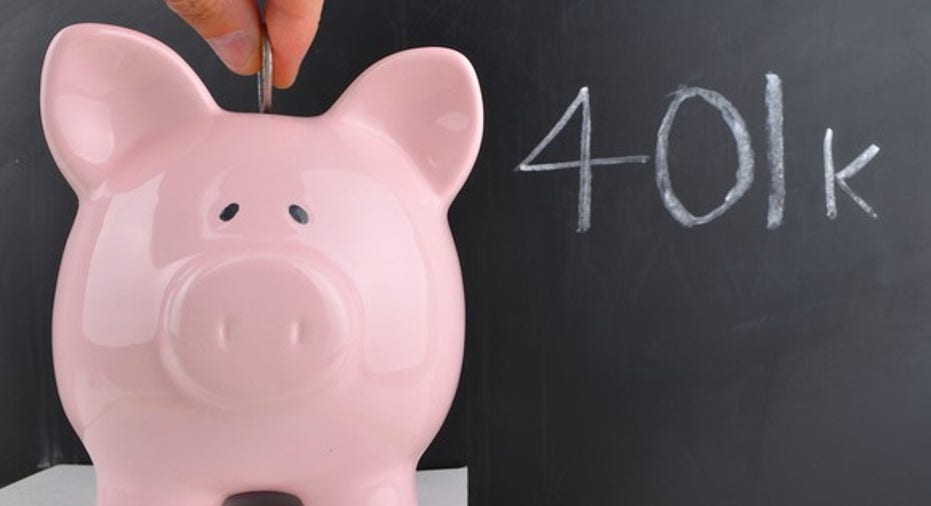What Will My 401k Be Worth By The Time I Retire?

If you're contributing to a 401(k) or similar retirement plan at work, it's only natural to wonder how much of a nest egg you'll have when you're ready to retire. And while it's impossible to know exactly how much you'll have, here's a guide (with a calculator) that can help you get an idea of how much your 401(k) can grow, and how much of a difference an increase in your contributions could make.
The variables that affect your 401(k)
There are a few different factors that will determine how much you'll have in retirement:
- How much you have in your 401(k) now
- When you plan to retire
- How much you earn, and whether you get raises and promotions in the future
- Your contributions as a percentage of your income
- How much of your contributions your employer is willing to match
- The returns you earn on your investments
Some of these factors are already determined, such as the current value of your 401(k), your salary, and how much your employer is willing to match. However, by looking at the history of the stock market and bond performance, you can get a good idea of how much you can expect your investments to earn over long periods of time. And you can choose to contribute more or less to your 401(k), which is a major factor in your long-term earnings power. So let's take a closer look at these.
Image source: Getty Images.
How much can you expect your 401(k) investments to earn?
To be perfectly clear, there's no way to reliably predict investment performance over relatively short periods of time, especially when it comes to stocks which should be the largest type of investment in your 401(k). However, by examining long-term trends, it is possible to predict with reasonable accuracy how your investments could perform over long time periods.
For example, throughout modern U.S. history, the stock market has generated total returns of 9-10% per year, on average. And bonds, or fixed-income investments, have generated 4-5% returns, historically.
As a general rule, I often suggest that 401(k) savers should subtract their age from 110 to determine the percentage of stock-based investments they should have in their account. So, if you're 40, this implies you should have roughly 70% of your 401(k) assets in stocks.
I'll spare you the mathematics of calculating a weighted average for gradually shifting asset allocations, but the implication of this is that it's reasonable to expect total returns of about 7% over the long run, from a properly invested 401(k).
The effects of increasing your contributions
The majority of 401(k) savers contribute just enough to their accounts to take full advantage of their employer's matching contributions no more, no less. This is definitely a good place to start, and under no circumstances should you contribute less than this amount, but it may not be enough to produce the retirement nest egg you want, and you might be very surprised at how big of a difference a seemingly small increase in your contributions can make.
For example, let's say that you make $60,000 per year and are 35 years old. You already have $40,000 in your 401(k) and contribute 5% of your salary, the maximum your employer is willing to match dollar-for-dollar. Assuming 7% annual investment returns and 2% average annual salary increases, your 401(k) could be worth nearly $1.1 million by the time you're ready to retire at 65.
However, based on the often-used "4% rule" of retirement, this translates to about $44,000 per year in sustainable retirement income. And keep in mind that thanks to inflation, this amount of money won't be worth the same as $40,000 in today's dollars. Even when you factor in Social Security, will this be enough?
With that in mind, check out the effects of increasing your contribution rate to 6%, 7%, 8% and 10%. Even a small increase can have a big impact on your quality of life in retirement:
|
Employer Contribution |
Total Contribution Rate (% of Salary) |
30-year Ending Balance |
|---|---|---|
|
5% |
10% |
$1,060,193 |
|
6% |
11% |
$1,135,763 |
|
7% |
12% |
$1,211,333 |
|
8% |
13% |
$1,286,903 |
|
10% |
15% |
$1,438,043 |
Assumes 2% salary increases, and 7% average annual returns.
So, how much could your 401(k) be worth by the time you retire?
Fortunately, we have a calculator that can do the hard work for you. Try entering your current data into this calculator to get an idea of how much you can expect your 401(k) to be worth by the time you retire. Then, adjust the contribution percentage to a higher level that you feel you could reasonably afford and see the difference that it makes.
* Calculator is for estimation purposes only, and is not financial planning or advice. As with any tool, it is only as accurate as the assumptions it makes and the data it has, and should not be relied on as a substitute for a financial advisor or a tax professional.
The $16,122 Social Security bonus most retirees completely overlook If you're like most Americans, you're a few years (or more) behind on your retirement savings. But a handful of little-known "Social Security secrets" could help ensure a boost in your retirement income. For example: one easy trick could pay you as much as $16,122 more... each year! Once you learn how to maximize your Social Security benefits, we think you could retire confidently with the peace of mind we're all after.Simply click here to discover how to learn more about these strategies.
The Motley Fool has a disclosure policy.



















